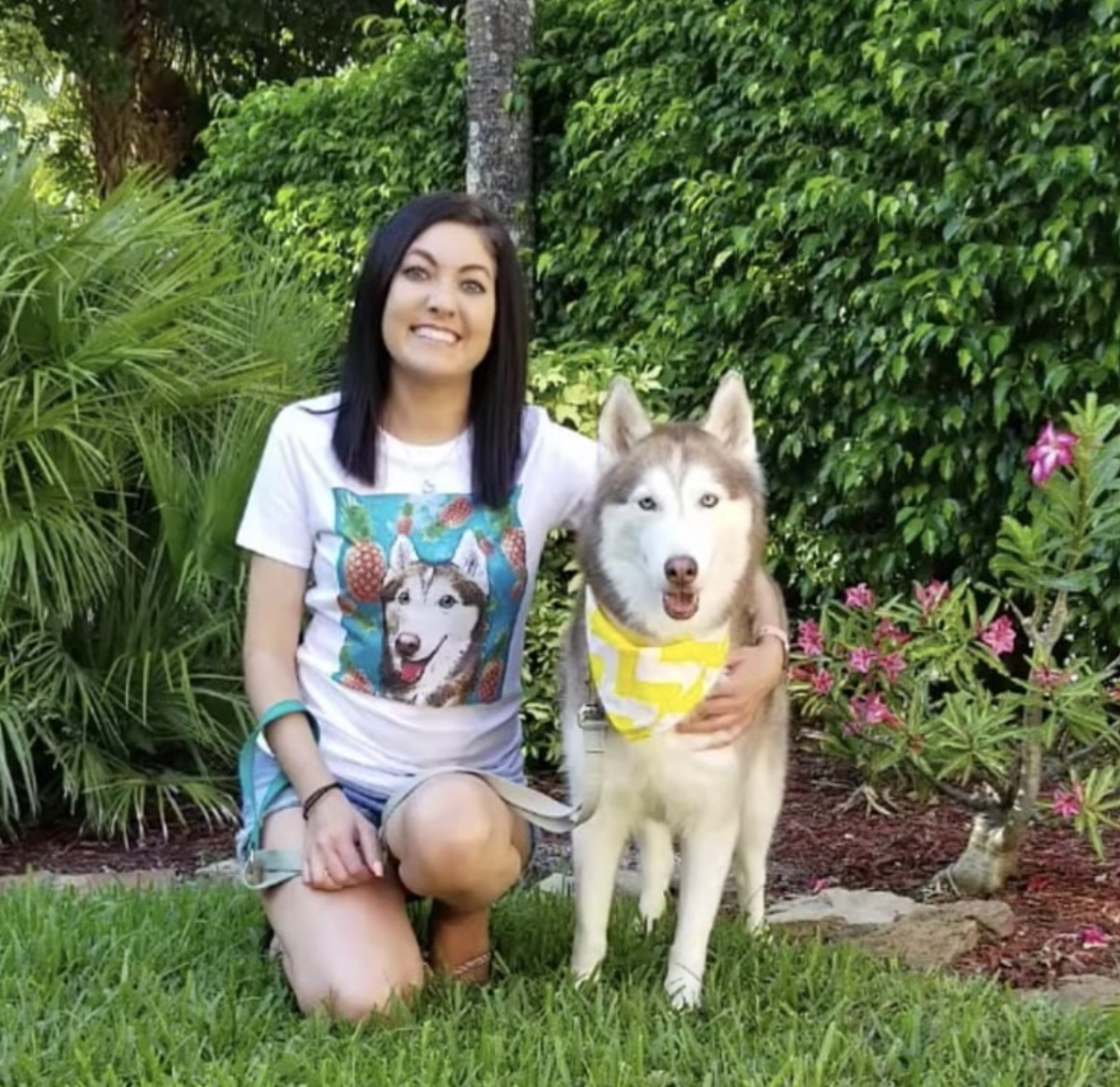Woohoo! You survived the toughest months of your puppy’s first year (hopefully with your sanity still intact). Give your pup a congratulatory snoot boop. In this 5th and final edition of our Puppy Survival Guide series for puppies aged 10–12 months old, we finish breaking down the most vital info to set you up for a successful and happy life together—covering health and wellness, training, behavior, nutrition, safety, and physical development.
Cheat Sheet Checklist For 10–12 Month Old Puppies
This essential task checklist rounds up key points from the article below.
| Essential Task Checklist For Puppies 10–12 Months Old |
|---|
| ☐ Schedule a 10–month adolescent vet visit to check for physical or behavioral abnormalities. ☐ Talk to your vet about appropriate time to switch from puppy food to adult dog food. Many dogs switch around 12 months. ☐ Talk to your vet about appropriate age to start forced exercise (e.g. taking your dog for a long run). ☐ Watch for females experiencing first heat cycle if they haven’t started already. ☐ Take steps to avoid accidental pregnancies once males and females reach sexual maturity. ☐ Talk to your vet about spaying or neutering your puppy—many vets wait until 12 months old. ☐ Talk to your vet about preventative gastropexy surgery for large and giant breeds—often done during spay/neuter. ☐ Continue to introduce new things/people slowly to avoid future issues. Reward with treats. Your dog is more easily spooked during this age. ☐ Adolescent puppies are likely to test boundaries. Go back to basics on training if necessary, or seek help from a trainer. ☐ Talk to your vet about starting routine dental cleanings. Continue at-home dental care with toothbrushing and dental chews. ☐ Once your puppy reaches 12 months, talk to your vet about necessary yearly check-ups and vaccine booster recommendations. ☐ Continue routine flea/tick/heartworm prevention. ☐ It’s a pup parent requirement that you exclaim “Oooo big stretch!” every time they stretch out their leggies. |
What Should You Already Be Doing Before Your Puppy Hits 10 Months Old?
If you missed the first four chapters in our Puppy Survival Guide series, or just adopted a 10–12 month old puppy, we suggest checking out Weeks 8–12, Months 3–4, Months 5–6, and Months 7–9 to make sure you didn’t miss any important milestones.
We know, that’s an overwhelming amount to cover! That’s why we took notes for you! In case you don’t have time to dive into those articles right now, here’s a quick recap of essential puppy tasks covered in previous articles that should be started or completed by the time your puppy hits 10 months old:
- Complete full series of puppy vaccines (DA2PP/DAP + rabies) and deworming treatment.
- Consider non-core vaccinations depending on lifestyle and location (i.e. bordatella vaccine).
- Females likely have gone through first heat cycle around months 5–6. Some larger dogs catch up during later months. Take precautions to avoid accidental pregnancy.
- Discuss spay/neuter options for both male and female dogs starting around 6 months. Vet may suggest waiting until around 1 year.
- Discuss gastropexy surgery with vet for large and giant breed dogs to avoid deadly canine bloat.
- Puppy should have lost all baby teeth and adult teeth should be fully erupted. Discuss dental concerns with your vet.
- Enroll in puppy socialization or training classes.
- Have a regular tooth brushing and nail clipping routine.
- Feed meals 2x/daily, and discuss weight goals with vet. Some small breeds may switch to adult food around months 7–9.
- Puppy should be socializing and meeting other dogs in controlled environment.
- Introduce puppy to at least 90 different different new, fun experiences (new people, places, things, and objects).
- Puppy-proof your home, yard, and vehicle—including buying a crash-tested car seat or safety harness.
- Puppy should have a good grasp of potty training, crate training, and learning not to bite/be mouthy.
- Understand basic commands (sit, down, come, stay, etc.) and recognize their name.
- Work on manners (i.e. no biting, no jumping on people, no begging, walking nicely on leash).
- Give routine (often monthly) flea/tick/heartworm treatment.
- Avoid forced and strenuous exercise until bones are fully grown around 12–18 months.
- Reestablish boundaries and routines during stubborn puppy adolescent period.
- Boop nose once per day.
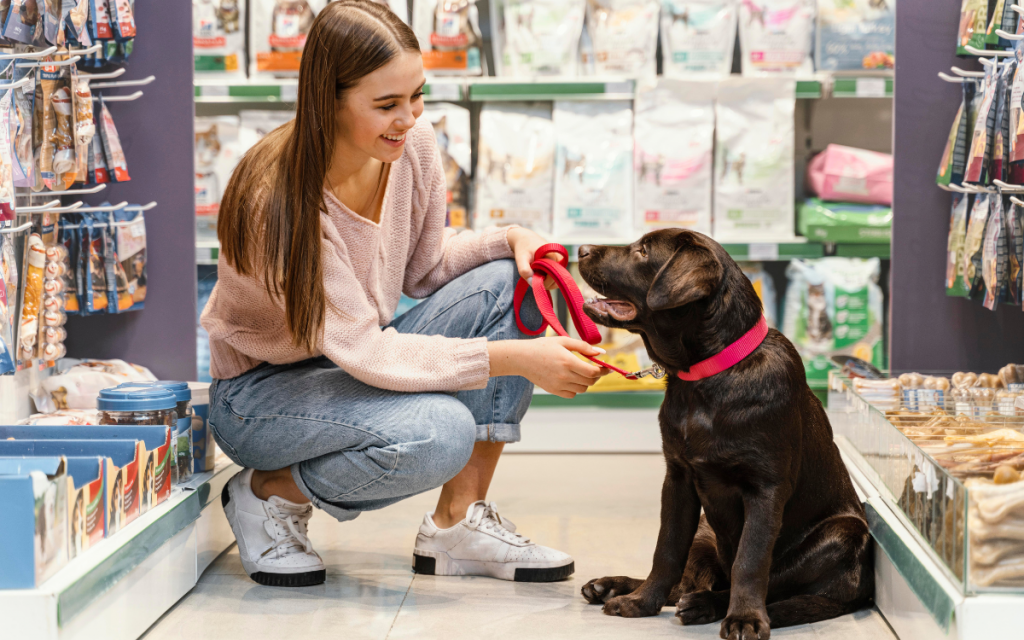

Physical Growth & Development
By 10–12 months, many dogs—with the exception of giant breeds and some large breeds—are now fully grown. They’ll still have some filling out and fluffing up to do, but they won’t get much bigger overall. They’re at a stage that’s comparable to when you first open one of those vacuum-sealed mattresses. They don’t get any bigger lengthwise after opening them, but you have to leave them out overnight to expand and fluff up.
Puppy Growth Chart1
| Dog Size | Weight | Rapid Growth Period | Timescale To Fully Grown | Total Lifespan |
|---|---|---|---|---|
| Toy (Extra Small) | Less than 8 lbs | Birth–11 weeks | 6–12 months | Approx 15+ years |
| Small | 9–22 lbs | Birth–4 weeks | 8–12 months | 14–16 years |
| Medium | 23–55 lbs | Birth–16 weeks | 8–18 months | 10–12 years |
| Large | 56–99 lbs | Birth–18 weeks | 11–18 months | 9–12 years |
| Giant | Over 100 lbs | Birth–20 weeks | 12–24 months | 7–9 years |
Physical Appearance & Changes Milestones
- Bone growth plates fully close in small, medium, and some large breeds. Puppy reaches young adult stage: 10–12 months.
- Some large and giant breed females may experience first heat cycle: 10–24 months.
- Adolescent vet visit should be considered to identify arising physical or behavioral issues: 10 months.
- Can safely start forced exercise for small, medium, and some large dogs: 12 months (Giant breeds likely need to wait until 18–24 months.)
Bone Growth
Most small, medium, and some large dogs will reach physical maturity during months 10–12. A puppy is considered to have reached physical maturity when their bone growth plates fully close2. Growth plates are the parts of bones that get longer as puppies grow during their first year, and don’t fully close until their skeleton is done growing. For some large breeds and most giant breeds, this likely won’t happen until closer to 18–24 months old.
Once your puppy’s bones are done growing—and with the approval of your vet—your dog should be able to handle forced exercise (i.e. going for a run with you) without damaging their joints. Strenuous exercise before puppies’ skeletons are finished growing can cause future hip and joint issues. When they’re close to 1 year old, it’s a good idea to talk to your vet about the ideal age to start more rigorous exercise.
Puppy Puberty
Most small, medium, and some large sized dogs likely went through puberty between months 5–9; larger dogs may reach puberty during this 10–12 month period. Even still, some giant breeds may not reach puberty until a few months later. Puberty is also when females enter their first heat cycle (a.k.a. doggie period). Once your puppy reaches puberty, they become sexually mature and capable of reproducing. However, allowing puppies (who are still growing themselves) to become pregnant this early is dangerous and high risk to both your puppy’s health and the pups they would be carrying. This is one of many reasons it’s extremely important to take steps to avoid accidental pregnancies, and talk to your vet about spay and neuter options at this time.
Need a refresher on what to do once your female dog starts their first heat cycle? Click here!


Behavior & Personality
All puppies at this age will still be going through their second fear impact period, during which they’re easily spooked and skittish. At the same time, depending on your puppy’s breed, they will either be going through puppy adolescence or entering their young adult stage.
Second Fear Impact Period Continues
From 6–12 months old your puppy will go through what is called a “fear impact period.” In fact, this is their second fear impact period (the first happens around month 3). During this time—which lasts for months—your puppy will be easily spooked by new things2. Although some of their fears can be pretty amusing at the time (picture a puppy barking at a wacky waving inflatable arm flailing tube man), it can have a lasting impact on them if you don’t properly address their fears.
- Take baby steps with introductions to new objects/people/situations.
- Give lots of treats to reassure them during introductions. Show them that the “thing” is not scary, just new.
- For a refresher on fear impact periods, check out our 3–4 Month Puppy Guide.
Puppy Adolescence & Young Adult Stages
Depending on your dog’s breed and size, they may be going through puppy adolescence or their young adult stage.
- Puppy Adolescence: Starts around month 6 for smaller dogs and closer to 1 year for larger dogs. This is when puppies begin to gain confidence, seek independence, and may begin to test boundaries. It can be a tough time for pup parents, but just know they aren’t being jerks on purpose. Click here for a refresher on how to navigate this stage.
- Young Adult: Starts around month 10 for smaller dogs and closer to 12–18 months for larger dogs. This is when dogs reach both social and physical maturity. Socially, it’s when they should have a good grasp of the household routine, their surroundings, and have their confidence established. It’s also a time when undesirable habits and reactions tend to pop up that may have been missed during early training and socialization, including food and toy guarding, undesirable reactions toward strangers and animals, and newly developed fears. You may need to go back to basics with your training, or seek help from a professional behaviorist.
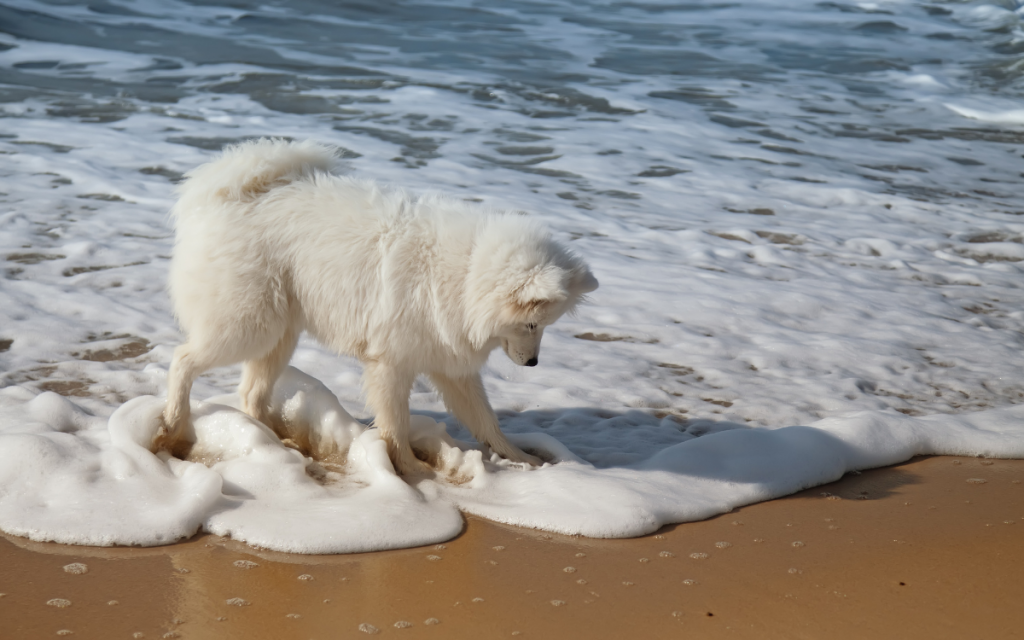

Health & Wellness
Your puppy should be fully vaccinated, dewormed, and on routine flea/tick and heartwork prevention. If you haven’t done so already, now is the perfect time to talk to your vet about:
- Scheduling a 10–month vet visit to identify physical or behavioral abnormalities.
- Spaying or neutering your puppy.
- Gastropexy preventative surgery for large and gaint breed dogs to prevent deadly canine bloat.
- Microchipping your puppy.
- Pet insurance options.
- How often the vet would like to see your dog for routine wellness exams in the future.
- Routine professional dental cleanings to prevent dental disease, as well as at-home dental care guidance.
- When to schedule core booster vaccines. Your dog will need routine rabies and DA2PP/DAP (Distemper, Adenovirus, Parainfluenza, and Parvo) boosters throughout their life. Depending on the vaccine, they may last 1–3 years before needing a booster.
- When to schedule non-core booster vaccines (such as Bordetella).
Spay Neuter
Although some veterinarians will spay or neuter a puppy as early as 6 months old, studies in recent years have shown that there are advantages to waiting until around 1 year to spay or neuter. Follow your vet’s guidance about the proper time to spay or neuter.
Advantages Of Spaying Or Neutering
- Avoid accidental pregnancies.
- Help control pet overpopulation of over 3 million dogs in shelters every year. Reduce number of dogs being euthanized in shelters each year.
- Males are less likely to roam or mark territory by peeing on things in your house2.
- Males are less likely to become aggressive and prone to biting2.
- Females can avoid messy heat cycles2.
- Females less likely to develop life-threatening uterine infections in the future2.
- Females less likely to develop mammary cancer2.
- Males are less likely to develop prostate infections and prostate cancer2.
- Males less likely to develop perineal hernias2 (when muscles of pelvic floor push into abdomen).
Disadvantages Of Spaying Or Neutering
- If spayed or neutered too early, it may cause more joint issues in the future. This is still a topic of debate, and also a reason vets are choosing to wait until puppies are 1 year old before spaying or neutering2.
- It’s still unclear whether or not spaying and neutering may increase the risk of other cancers as dogs age, although it’s known to decrease certain cancer risks such as mammary and prostate cancers2. More research is needed.
Related Article : Spaying Or Neutering Your Dog: Benefits, Risks, & More
Dental Care
Along with asking your vet about starting routine professional dental cleanings, it’s incredibly important to stick to an at-home dental cleaning routine, as well. Dental health is often one of the most overlooked, yet most important aspects of dogs’ health. If teeth are not taken care of, dental disease in advanced stages can cause tooth loss, bone, and tissue loss to the point of causing a broken jaw, infections, sinus and eye issues, and even heart, kidney, or liver disease.
Related Article: The 4 Stages Of Periodontal Disease In Dogs: A (Not So Gross) Visual Guide
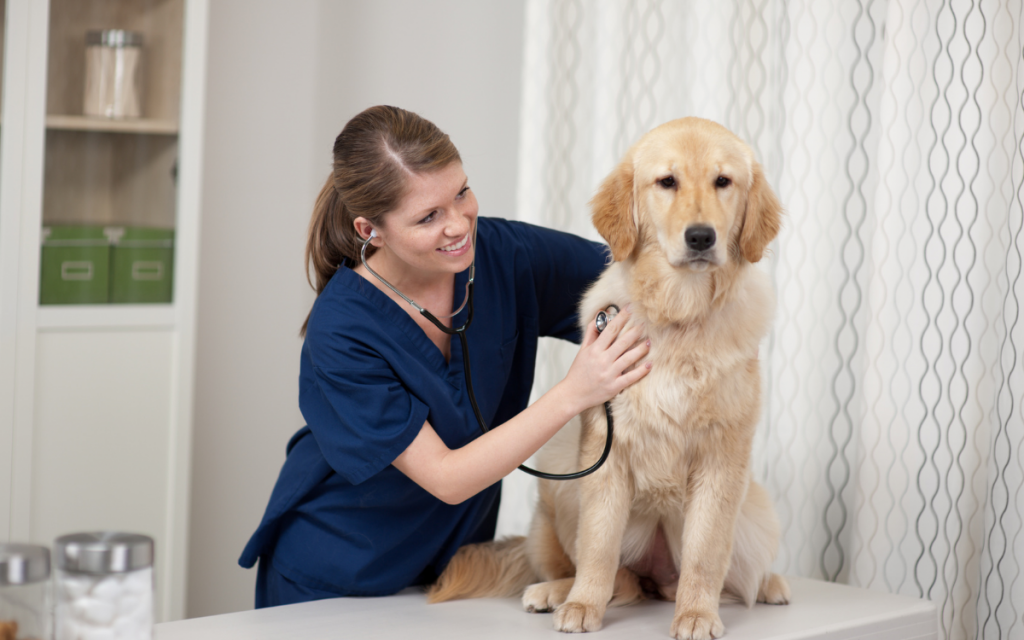

Nutrition & Exercise
Here’s what your dog’s eat, sleep, poop, and play schedule will look like from age 10–12 months:
| 10+ Months Old | |
|---|---|
| Eat | 2x daily |
| Sleep | 11–16 hours per day |
| Potty | 3–4 potty breaks per day (Can “hold it” up to 8 hours) |
| Exercise | 45 minutes of exercise. Ask your vet about starting rigorous exercise. |
Always do you own research when picking the perfect food for your pup, but if you need a place to start, try BARK Food for puppies and adult dogs!
Diet & Ideal Weight
At month 10, your puppy should now be eating twice per day. They should be kept at an ideal weight where their waistline is narrow with an “hourglass” figure. Make sure to discuss their ideal weight with your veterinarian. This will help you keep them on target.
As your puppy nears the 12 month mark, you’ll also want to discuss with your vet when the appropriate time is to switch from puppy food to adult dog food. In general, these are the timelines for when you should ask your vet about switching:
Small breeds: 7–9 months
Medium breeds: 9–10 months
Large breeds: 12–13 months
Giant breeds: 13–14 months
Leisurely & Forced Exercise
By now, your dog should already be getting about 30–45 minutes of leisurely exercise per day. This would include things like light walks and playing in the yard. Around 10–12 months—depending on the size of your dog—is when you can begin to add in forced exercise, like taking them for a run with you.
However, forced exercise should not be started until your veterinarian has confirmed that your dog’s growth plates have fully closed and they are done growing. Waiting until your dog hits this stage will help prevent too much pressure on bones that may cause hip and joint issues in the future2. Some large and giant breeds may need to wait a few more months to begin forced exercise.


Training
At 10 months, your puppy should have a good grasp on all of their basic commands. You should be working with them to increase the difficulty of their commands, or adding new tricks. Make sure to always keep up with command practice throughout your dog’s life. Once you stop practicing, they’re more likely to keep pushing boundaries or ignoring commands.
Basic Commands Your Puppy Should Know
- Recognize name
- Sit
- (Lie) Down
- Stay
- Come
- Leave it/drop it
- Heel
- “Okay” or another release command
- Shake, roll over, or a few fun trick commands
- Continue to increase difficulty, distance, and length of time for performing commands. Click here for a refresher on increasing difficulty.
Free-Roaming Without Crate
At 10 months old, your puppy’s bladder should now be able to “hold it” for 8 hours. This means you can begin to test the boundaries of leaving your puppy out of their crate for short periods of time while you’re gone. It’s best to start testing free-roaming by leaving for short periods of time before leaving them out of their crate for an entire work day. Life Pro Tip: Buy a puppy nanny cam to keep an eye on your dog while you’re gone.
Work To Address Undesirable Habits
During puppy adolescence and the young adult stage, your puppy may start showing signs of bad habits that weren’t addressed well early on. This may look like food guarding, toy guarding, being possessive over certain family members, nipping, showing aggression, or separation anxiety. Any undesirable habits should be addressed ASAP. The longer you let your puppy get away with these behaviors, the harder it will be to correct them. Don’t be afraid to seek help from a professional trainer!
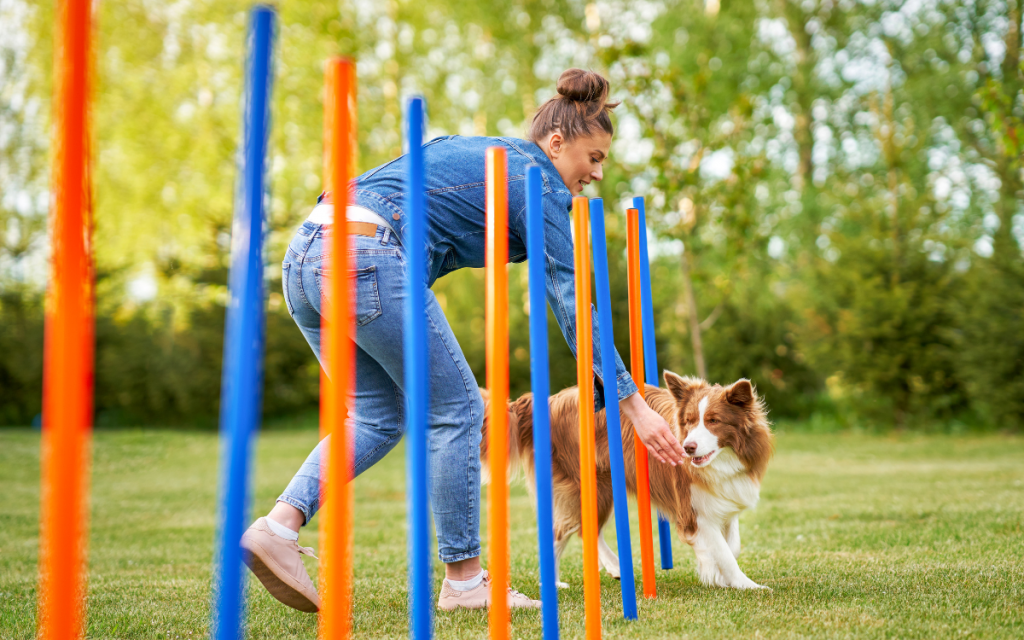

Puppy Safety
- Avoid Leaving Your Dog Alone In The Yard: A lot can go wrong. Your dog may eat a toxic plant or garden chemicals without you seeing. They may dig a hole under the fence or, worst of all, there are many stories of strangers stealing dogs, poisoning them, or shooting them when no one is around.
- Always Keep An Eye On Your Dog At Parks & When Playing: Keep an eye on your dog to make sure they’re playing well with others, and so that you have a better chance of seeing warning signs of aggression before a fight breaks out. You also don’t want to be shamed by other pet parents as “the pooper” who doesn’t clean up after their dog.
- Teach Your Dog “Leave It” Or “Drop It” To Help Protect Them: This command can save them from eating dead animals, random chicken bones, sharp objects, and other dangerous items that can either kill them, cause intestinal blockages, or damage their digestive system. Not all things that get eaten can get thrown back up without the need for emergency surgery.
- Keep Their Collar On In The House: Especially important during thunderstorms, fireworks, with guests visiting, or to protect your dog in the event of a house fire. These are the times dogs are most likely to run away.
- Never Leave Your Dog Alone In A Car: Hundreds of dogs die each year from heat exhaustion after being left in a car. After 30 minutes in a car on an 80F day, the inside temperature reaches about 115F.
- Never Allow A Puppy To Roam Free In A Vehicle: They will become a projectile in an accident. Although it’s hard to pinpoint statistics for dogs in car crashes, it’s reported that 30% of humans who don’t wear seatbelts in an accident are thrown from their car, compared to only 1% of those who do wear seatbelts. Of those who are thrown from their car, an astonishing 75% die. Considering many pet parents don’t restrain their dogs in the car, the odds of surviving a crash are not in your dog’s favor. Use a crash-tested harness and seatbelt, and never secure a seatbelt directly to a collar—it can cause strangulation.
- Never Let A Dog Ride In The Bed Of A Truck: It’s estimated that thousands of dogs die this way each year. It’s also illegal for dogs to ride in a bed of a truck in CA, CT, ME, MA, NH, and RI. Even when attached with a leash, dogs may jump to chase an animal, or get thrown during an accident, resulting in strangulation.
- Don’t Let Your Dog Hang Half Their Body Out Of A Window: Yes, it looks cute, but if they can fit their front feet out the window, then they can jump out to chase something or fall into traffic. Although there aren’t available statistics for how often this happens, one quick Google search will supply you with enough horror stories to last a lifetime.
- Microchip Your Puppy: Microchipped dogs who get lost are reunited with their pet parents 52.2% of the time, compared to non-microchipped dogs who are only reunited 21.9% of the time.
- Consider A GPS Collar: GPS collars can help you locate your dog immediately via a phone app.
- Use A Dog Life Vest: Even strong swimmers can drown in lakes and oceans in rough conditions, or if they fall off a boat.
- Don’t Leave Your Dog By A Pool Unattended: An estimated 5,000 pets drown in backyard pools each year.
- Use Reflective Or Light-Up Gear At Night: This can help cars and other pedestrians see you.
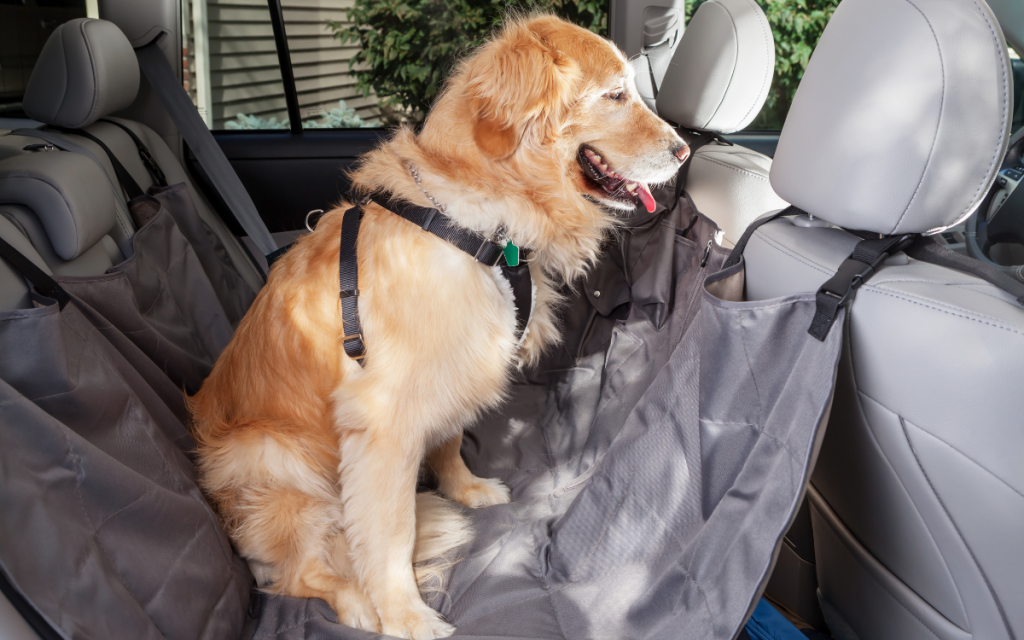

Puppy Products To Consider
Need an essential product refresher? Check here!
Additional Products/Memberships For Your 10–12 Month Old Puppy
- Puppy nanny cam
- Toys to play catch for extra exercise
- Crash-tested seatbelt & harness
- GPS collar or GPS tag
- Cute bandanas
- Dog carrier backpack (for you to carry them)
- Dog backpack (for them to carry things—like on a hike)
- Rain/snow/hiking boots to protect paws from road salt and sharp objects
- Pet insurance
- Training treats
- You can never have too many toys!
- Don’t let your dog become part of the 80% with dental disease by age 3. Take care of their teeth with an easy toothbrush-less dental kit.
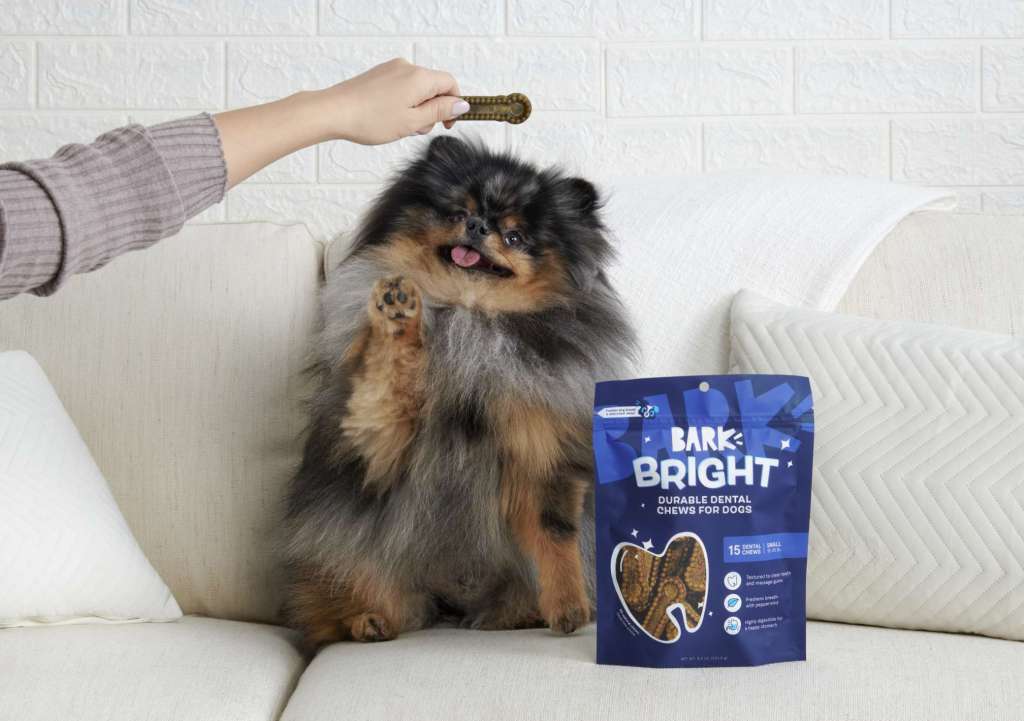

Emergency Resources
ASPCA Animal Poison Control
If your puppy eats something they shouldn’t, call the animal control poison center at (888) 426-4435.
Emergency Vets
If your puppy has an emergency when their regular vet is closed, you may need to find a 24/7 emergency vet near you. Emergency Vets USA enables you to search for an emergency vet by state or call (855)-778-6815.
Lost Pet
National hotline for reporting lost pets 1 (800) 486-2631.
Dog CPR How-To
Dog CPR Quick Guide
Dog CPR Training Video
Choking Dog/Dog Heimlich Maneuver
Dog Heimlich Maneuver Training Video
Sources
1Lewis, Georgia. “Musculoskeletal Development of the Puppy Birth to Twelve Months.” Research Gate, Hartpury University: Animal Therapy Magazine: Issue 15, 2019, https://www.researchgate.net/profile/Georgia-Lewis/publication/333118590_Musculoskeletal_Development_of_the_Puppy_Birth_to_Twelve_Months/links/5cdc8200299bf14d959c443d/Musculoskeletal-Development-of-the-Puppy-Birth-to-Twelve-Months.pdf.
2Hennet, Margo. “Puppy Survival Guide.” 2 Mar. 2022

